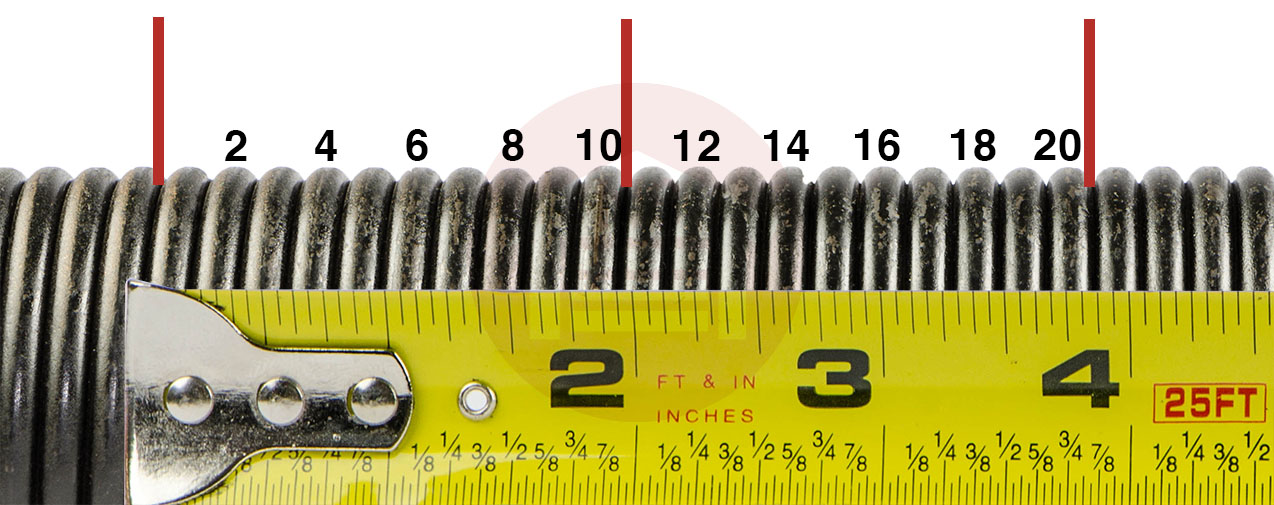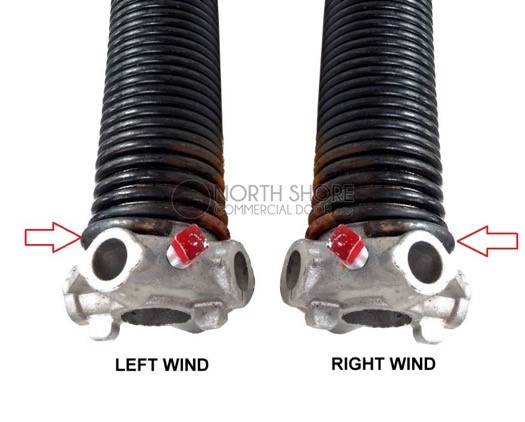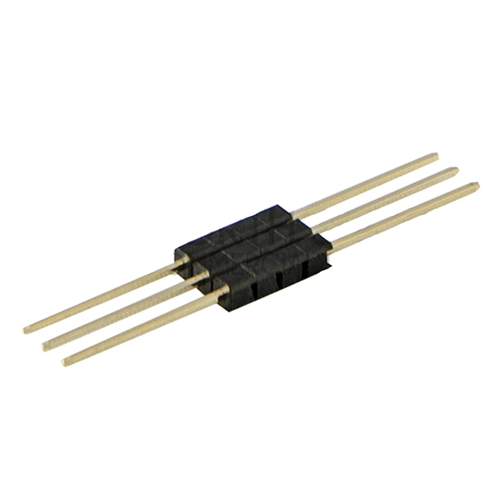
- Usually Ships 4 to 7 Business Days
Action Hardware
Commercial Garage Door Torsion Spring
- Usually Ships 4 to 7 Business Days
- atc-product:
- CUT-AND-CONED-SPRINGS
- atc-product:
- TORSION-SPRING
- atc-product:
- MWRDSP
- atc-product:
- T-RESWINDBAR18
- atc-product:
- T-COMMWINDBAR24
- atc-product:
- T-HEXCOMM24
With standard garage door springs lasting about 10,000 cycles, it’s inevitable that your commercial garage doors’ springs will eventually give out. Get these 3 3/4-inch interior diameter garage door torsion springs from North Shore Commercial Door to instantly get your doors working like new again.
When ordering your garage door parts, keep in mind that commercial garage door springs tend to give out at around the same time. So even if only one of your springs is broken, it’s best to order them in sets of two. If you have any questions about this product, use the handy “Questions” app below to get more information from our staff and other users.
Built with a 1 19/32, 1-3/4, 2, 2 5/8 or 3 3/4-inch diameter for commercial applications Comes with cones installed on each end Choose from standard springs (10,000 cycles) or long-life springs (25,000 cycles) Note: When long-life spring option is picked the spring size changes and is usually larger. Order custom spring lengths to match your commercial doors Select from left- or right-wound springs Available in wire sizes to the nearest 1/16th inch
The four specific items required to purchase the correct replacement torsion spring.
#1 Wire Size
#2 Inside Diameter
#3 Length of spring
#4 Wind of spring (Right or left wound)
WIRE SIZE:
A spring’s wire size can be determined by several different tools or techniques. Use of a caliper, micrometer, or wire gauge are common ways to determine a spring’s wire size. If none of these tools are available, simply measure ten coils of wire to the nearest 1/16th of an inch, and refer to the Spring Wire Chart. The spring must be tightly compressed, with no gaps. It’s also a good idea to measure twenty coils as a double check.

INSIDE DIAMETER:
Measure the inside diameter to the nearest 1/16th of an inch. In most cases, the cones inserted in each end of the spring will have a manufacturers name (OHD or Raynor, etc.) which will give a clue toward the proper identity. The chart on the right shows common ID’s used by various manufacturers. If no manufacturers name is evident, usually a part number on the cone will indicate the inside diameter: 134 or 175 = 1 3/4" ID 258 or 263 = 2 5/8" ID 375 or 334 = 3 3/4" ID
LENGTH OF SPRING:
Measure spring length with the spring in its unwound state. In the case of a distorted or broken spring, simply count the total number of coils and multiply by the wire size. 120 coils x .250 wire = 30" 120 coils x .375 wire = 45"

RIGHT OR LEFT HAND WOUND:
To ensure the correct wind, please refer to the Winding Chart below. Please remember the side of the door a spring is located on does not indicate the wind of the spring. Most winding cones are color coded for hand identification. Right hand wound springs should have red winding cones. Left hand wound springs should have black winding cones.
LEFT WOUND SPRING AND RIGHT WOUND SPRING RESPECTIVELY

When ordering your garage door parts, keep in mind that commercial garage door springs tend to give out at around the same time. So even if only one of your springs is broken, it’s best to order them in sets of two. If you have any questions about this product, use the handy “Questions” app below to get more information from our staff and other users.
The four specific items required to purchase the correct replacement torsion spring.
#1 Wire Size
#2 Inside Diameter
#3 Length of spring
#4 Wind of spring (Right or left wound)
WIRE SIZE:
A spring’s wire size can be determined by several different tools or techniques. Use of a caliper, micrometer, or wire gauge are common ways to determine a spring’s wire size. If none of these tools are available, simply measure ten coils of wire to the nearest 1/16th of an inch, and refer to the Spring Wire Chart. The spring must be tightly compressed, with no gaps. It’s also a good idea to measure twenty coils as a double check.


INSIDE DIAMETER:
Measure the inside diameter to the nearest 1/16th of an inch. In most cases, the cones inserted in each end of the spring will have a manufacturers name (OHD or Raynor, etc.) which will give a clue toward the proper identity. The chart on the right shows common ID’s used by various manufacturers. If no manufacturers name is evident, usually a part number on the cone will indicate the inside diameter: 134 or 175 = 1 3/4" ID 258 or 263 = 2 5/8" ID 375 or 334 = 3 3/4" ID

LENGTH OF SPRING:
Measure spring length with the spring in its unwound state. In the case of a distorted or broken spring, simply count the total number of coils and multiply by the wire size. 120 coils x .250 wire = 30" 120 coils x .375 wire = 45"

RIGHT OR LEFT HAND WOUND:
To ensure the correct wind, please refer to the Winding Chart below. Please remember the side of the door a spring is located on does not indicate the wind of the spring. Most winding cones are color coded for hand identification. Right hand wound springs should have red winding cones. Left hand wound springs should have black winding cones.
LEFT WOUND SPRING AND RIGHT WOUND SPRING RESPECTIVELY











